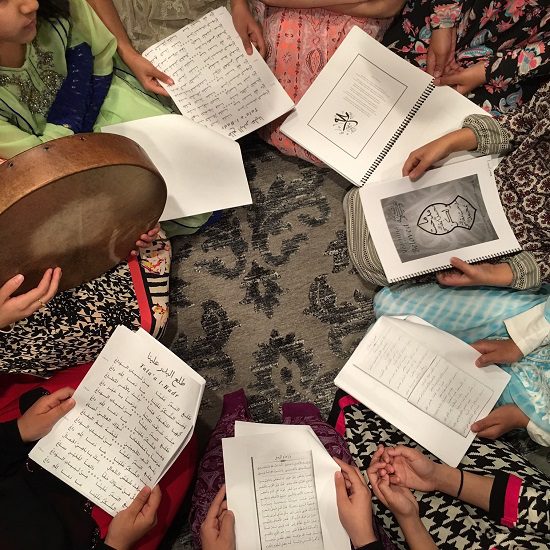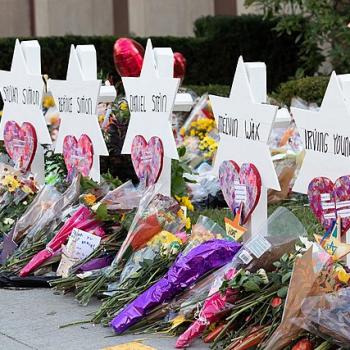 |
|
Don’t shoot the messenger
|
The niqab, that ever-enduring symbol of religious oppression and imposition in the Western world, is often perceived as an easy target because most people, regardless of political or ideological leaning, share a visceral scorn for that piece of cloth. Criticisms of the Muslim face veil – whether it be on the basis of public safety, concern for the plight of Muslim women, or the protection of cultural and societal values against foreign pressures – frequently serve as an easy cover to mask one’s discomfort with Muslims as a visible minority. It is an easy choice, for it is only a minority that sees fit to wear the niqab – a minority that is often not comfortable in the limelight and thus unlikely to cost anyone the vote.
So it is that politicians and commentators of every stripe found it convenient to attack the suggestion that veiled women could vote in Canada without showing their faces. Earlier this week, Marc Maynard of Elections Canada announced that Muslim women could do so in response to a hypothetical question posed by a journalist. The outrage and political posturing that spilled out of that announcement took on a consistently negative and inflammatory tinge.
Prime Minister Stephen Harper took time out of a press conference at the APEC summit in Australia to publicly rebuke Maynard. The role of Elections Canada is not to make its own laws, he insisted, but to put into place the laws that Parliament has passed. All of the other party leaders followed suit, insisting that the chief electoral officer had overstepped his role and subverted the democratic process. Fear-mongering organizations put in a word too, insisting that the electoral system had been bent to shariah demands. The criticisms reached a feverish pitch last week, when Maynard was called before a parliamentary committee to explain his actions and was in turn advised to reverse his announcement on the grounds that it was contrary to the democratic will.
Trouble is, it isn’t – and those politicians and commentators who have been speaking out so confidently against Maynard have been quietly setting a higher standard for veiled women than is required for any other citizen under Canadian law.
The Elections Act – which underwent reform in 2006 – says little about visual identification and even less about the niqab. In fact, the debates in Parliament and in the committee proceedings do not mention the niqab at all despite the extensive discussions about which groups might be affected by the reforms. Bill C-31 only lists the multiple ways in which an individual can vote at the polls: with photo identification, with two other pieces of identification approved by the chief electoral officer; or by being vouched for by another voter by way of an affidavit. That visual identification is not stipulated as a requirement for voting should have been evident not just to Prime Minister Harper and his team, but to all of the other political parties on the federal scene too.
What is even more peculiar, however, is that mail-in voting and proxy voting are – and always have been – permitted by law, though both are susceptible to abuse. Mail-in voting, an option that 80,000 Canadians took avail of in the last federal election, is conducted within the confines of one’s home. There is no official present to check the voter’s face, and neither is there any foolproof method of confirming that in fact the signing individual, and not a domineering family member, is responsible for filling out the ballot. Given that mail-in voting is allowed, it makes little sense that all of the parties are now fussing over visual identification.
There are two aspects of any electoral process that are crucial to the maintenance of a wholly democratic system. One, the election must be free of fraud. Two, citizens must be given every opportunity possible to vote. These two components together help ensure that the principles of majority rule, accountability and consent of the governed are upheld, but the two must be balanced against each other. If the rules are such that each individual must appear at the polls with visual identification, then voter participation, which is already on the decline, will simply slip even more. This is likely the reason the legislation was not tightened to include visual identification as a requirement of voting.
In any case, a government-issued document, even without photo identification, means that an individual’s identity has already been verified by a government body. Thus it should be proof enough that a voter is properly identified. And if naysayers are concerned that a voter must show his or her face so that it registers with the voting official, thus limiting the possibility that the voter can cast another vote in the same election, then the obvious response is that voting officials cannot, given the large amount of people who make it to any given polling station on elections day, remember what specific individuals look like.
Some commentators, Muslim included, have critiqued the Elections Canada’s announcement out of fear that it would stir up the ‘reasonable accommodations’ debate that has been simmering for quite some time in Quebec. Preoccupied with the protection of its cultural and linguistic identity, the province has taken an increasingly negative stance towards the increase in visible minorities and the subsequent need for greater cultural and religious accommodations. Controversy first arose last year when Muslim girls wearing the headscarf while engaging in soccer and tae kwon do were suddenly thrust into the media spotlight, and since then, La Belle Province has been far from sympathetic towards its Muslim community.
That this controversy might once again stir up unwarranted resentment against Muslims is a legitimate concern, particularly since Muslims have not asked for accommodations at the polls. In fact, some niqab-wearing women have spoken out against the allowance, insisting that they are comfortable showing their face to an official if it were done in a discreet and contained manner. Many simply do not care for the controversy, whether it is because they do not intend to vote or because they are already accustomed to removing their face coverings to verify their identity in a number of circumstances, air travel being just one of them. Furthermore, under Islamic law, women are permitted to uncover their faces while participating in certain public functions (e.g.) whilst testifying in court and engaging in business transactions. In light of this religious allowance, some Muslims have complained that there were no consultations before Elections Canada announced that women in niqabs would be permitted to vote.
This criticism is premised on an unfair assessment of Elections Canada as the body responsible for the furor. Elections Canada was neither violating nor re-interpreting the law. It was merely explaining the law as it had been set by those in power. Rather, it is Prime Minister Harper and indeed all of the parties chiming in that deserve considerable blame for playing on the public’s disgust for the niqab. Yes, it is legitimate to ask whether or not veiled women must identify themselves at the polls. What makes little sense, however, is for the politicians who have themselves passed the law to subsequently critique those who then enforce it, thus leaving an already-beleaguered community deliberating over whether or not to support what is right even when it is not politically opportune to do so.
Safiyyah Ally is associate editor of altmuslim.com and a Ph.D student in Political Science at the University of Toronto. She is the host of “Let the Quran Speak,” a television show that airs Saturdays at 4:00 pm on VISION-TV in Canada.













